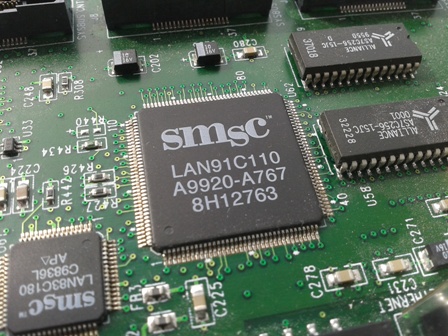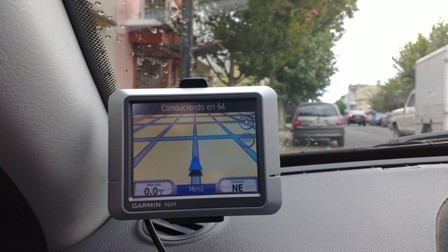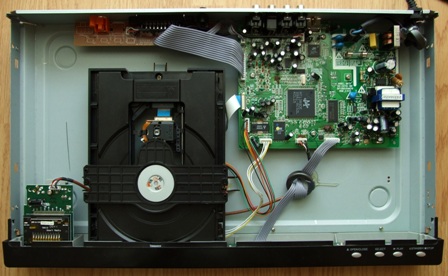Every day the world is becoming more and more digital, connected, and automated, but what makes this transformation possible? In many cases, it is a technology that is often overlooked: embedded systems. Embedded systems play a part in nearly every aspect of modern life. They impact the way we spend our leisure time, the way we commute, and the way we do business. In this article, we will give you a primer on what makes a something an “embedded system” and dive into some common use cases for embedded systems that should help drive the concept home.
What is an embedded system?
To begin to understand the impact embedded systems have on the world around us, we must first define what an embedded system is. In short, the definition of embedded system is “a computer system dedicated to performing a specific task or set of tasks as part of a larger system”.
This definition may be hard to understand at first, so we will try to help conceptualize it. As a general guideline, computing devices (i.e. device with a microprocessor or microcontroller) that are not general-purpose computers can be considered an embedded system. That means that a modern smartphone probably is not an embedded system, but it will likely have multiple embedded systems within it. For example, the electronics that control the camera and GPS system are embedded systems because they serve a specific purpose within the context of a larger system (the smartphone).
Similarly, a general-purpose computing device like a Windows computer can be made into an embedded system if it is designed to serve a specific function. Examples of this include computers that are dedicated to running point of sale (POS) applications or controlling automated teller machines (ATMs).
To summarize, key features of embedded systems are:
- Contains a microprocessor or microcontroller. A microprocessor or microcontroller are what give electronic systems processing power and fulfill the “computing device” requirement of embedded systems.
- Part of a larger system and designed to perform a specific task or set of tasks. In order for the system to be considered “embedded” it must be part of a larger system that serves a specific dedicated purpose and is designed to perform a specific task or set of tasks. The larger systems embedded systems are a part of may include additional hardware, mechanical parts, and even other embedded systems. Since they are designed to perform a specific set of tasks (for example routing network traffic or controlling a thermostat) embedded systems can be optimized for specific purposes. This allows engineers to improve performance and reliability while driving down power consumption and manufacturing costs.
- Often operate in real time. For embedded systems to be useful, they must often be able to process inputs and gather data in real time (i.e. fractions of a second) to produce an output. Functions that involve operating in real time include a camera responding to a user pressing a button or a computerized braking system responding based on road conditions.
 Embedded Systems In The Home
Embedded Systems In The Home
Embedded systems are integral parts of home life in the modern world. In a bedroom, you may find a digital alarm clock, T.V., and cable box, all three of which are devices that leverage embedded systems. The living room will likely have another T.V., digitally controlled audio systems, a router for Internet access, a wireless access point, and controllers for video gaming consoles. All of these devices are great examples of how ubiquitous embedded systems have become.
Moving out into other areas of the home, you will find smoke and carbon monoxide detectors, two embedded systems that help alert you in the event of danger in the home. Staying with the topic of alerting you to danger, a home that is equipped with a security system will likely find that a security system is actually a number of embedded systems like cameras, motion detectors, sensors, and control panels working together.
Additionally, many home heating and cooling systems are controlled by embedded systems that monitor temperature and control the home’s thermostat in real time. Finally, if we head into the kitchen, we may find embedded devices like coffee pots, microwaves, ovens and stovetops with digital control panels, and refrigerators with digital capabilities.
All these examples are just the tip of the iceberg when it comes to embedded systems within the modern home. For example, embedded systems used in home automation technology and those found within a “smart home” could warrant an article unto themselves.
 Embedded Systems On The Road
Embedded Systems On The Road
Vehicles on the road today are full of embedded systems designed to improve your driving experience. In fact, USA Today estimated that cars often have over 150 different subsystems. Often these subsystems are embedded devices that control core functions such as power steering, air-bags, and anti-lock breaks. Convenience features like global positioning systems (GPS) and satellite radios are other great examples of embedded systems that can be found in modern vehicles.
Moving forward, with self-driving cars becoming more and more popular, embedded systems will only become even more important to the automotive industry over the next decade. For a deeper dive on embedded systems and their role in making smart cars work, check out our Important Embedded Systems for Self-Driving Cars article.
There are also plenty of embedded devices on the road outside of your car. For example, traffic controlled by embedded systems that leverage a number of sensors or a preprogrammed schedule to control traffic. Similarly, light detection and ranging (LIDAR) guns that measure the speed of a vehicle and red light cameras are examples of embedded devices that are used to help enforce the rules of the road. Even after you park your vehicle, you may be required to “feed the meter” (pay a parking fee) for the time your vehicle will remain parked. In many cases, these parking meters are also embedded systems.
Embedded Systems In Business
Whether you work in an office, restaurant, factory, or other environments, it is likely that your workplace is full of embedded devices. Examples of embedded devices in the workplace include:
- The elevator that gets you to your office
- The point of sale systems at a restaurants
- The printers and scanners that help you make physical or electronic copies of the document
- The routers and switches that send data across corporate networks
- The machine control & monitoring devices in industrial plants that keep assembly lines moving
- Even the tools that are used to help develop and debug embedded systems, like our own Beagle USB 12 Protocol Analyzer, are often embedded systems themselves
While they may vary in complexity, with an elevator requiring only a few simple algorithms while machine control & monitoring devices in industrial plants may require advanced fuzzy logic, highly precise sensors, and advanced algorithms, they all demonstrate the importance of embedded systems to modern business.
Conclusion
Embedded systems are vital to modern society. Given that they are purpose-built for specific applications, they enable designs and optimizations that make it possible for us to enjoy the benefits of technology while minimizing cost and power consumption. Without embedded systems, our world would look vastly different than it does today. As technologies and movements like the Internet of Things, Industry 4.0, and “smart” homes & vehicles continue to gain traction, embedded systems will become more and more important. Understanding how embedded devices work and the myriad of applications where they can be used will make you better equipped to understand the world around you and leverage the benefits of embedded systems.
 Author Bio
Author Bio
Gil is a 20 year technology veteran with experience at industry leaders Cisco Systems, ResMed, and Air Liquide. Gil currently serves as the CEO for Total Phase and has held the role since October 2014. Prior to that appointment, Mr. Ben-Dov served as VP/General Manager from 2013 to 2014. He was previously director of sales, joining Total Phase in 2012.




 Embedded Systems In The Home
Embedded Systems In The Home Embedded Systems On The Road
Embedded Systems On The Road



